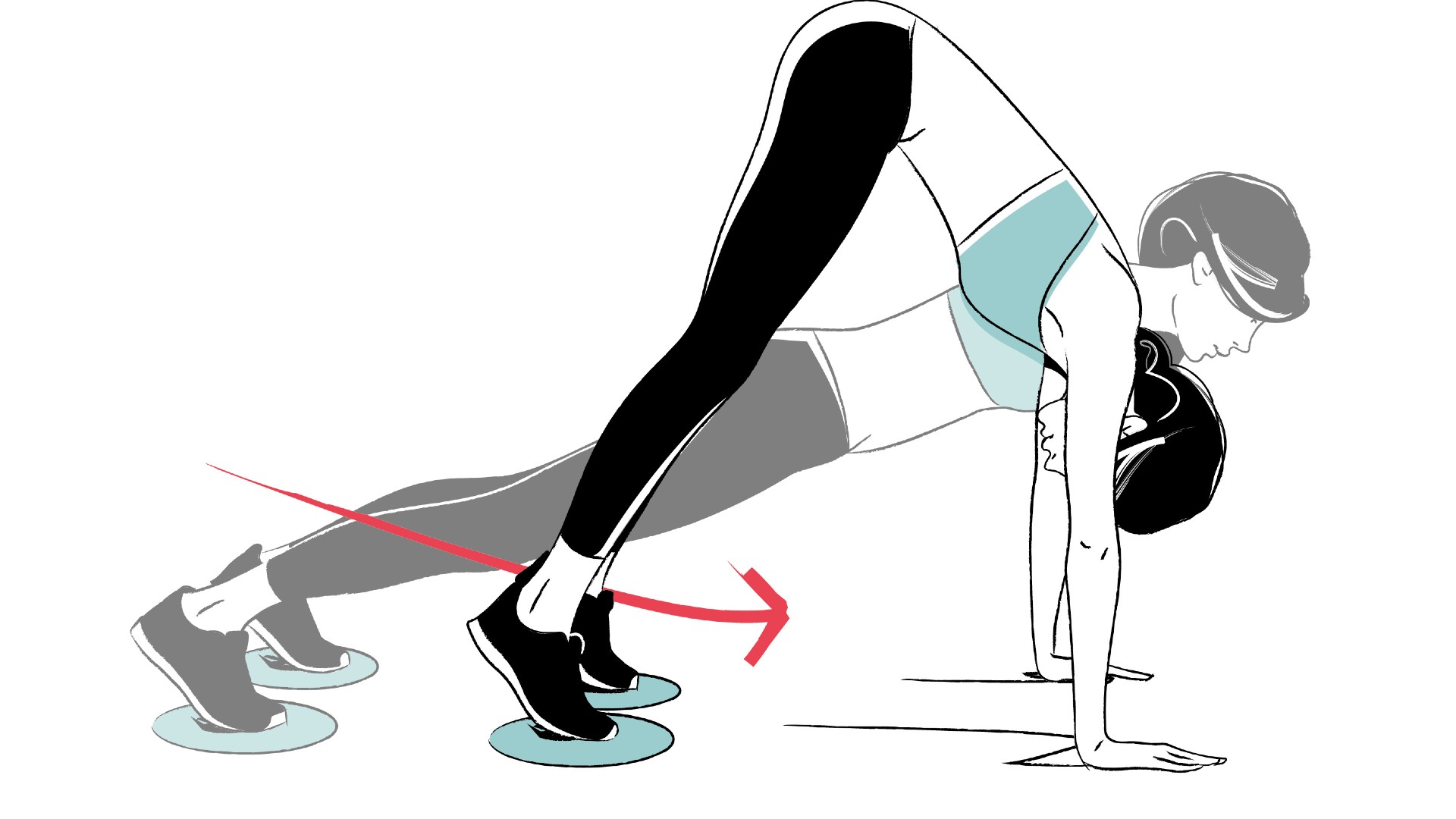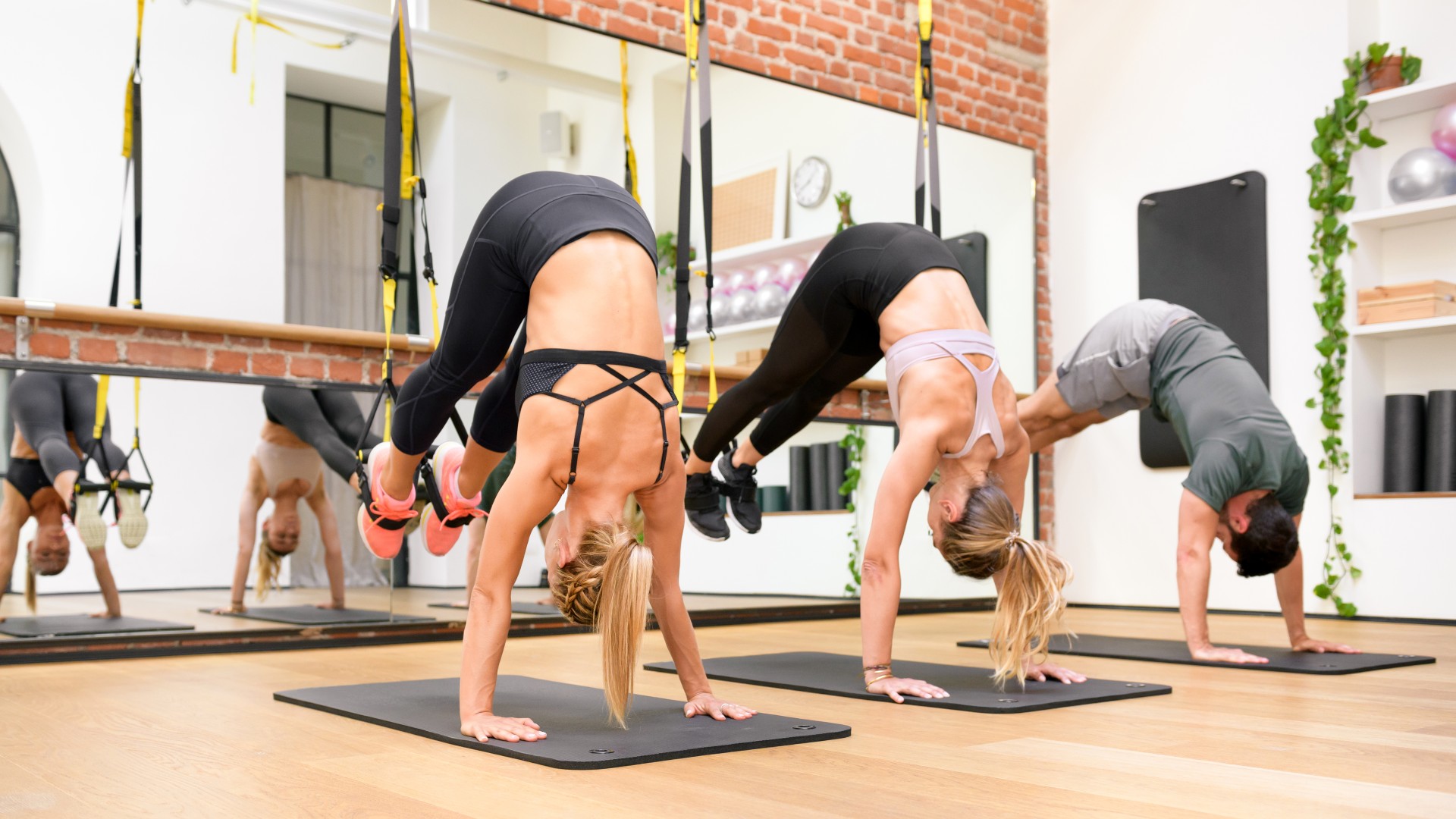
Plank pikes, or pike planks, are a moving plank variation that torches your shoulders and core muscles by changing your hip, shoulder and foot position.
During plank pikes, you’ll start in a forearm or straight-arm plank position, then push your hips up and slightly back while drawing your legs towards your arms into a pike (similar to a downward-facing dog but taller and more front-loaded). In theory, it’s simple to execute, but this core-torching plank exercise puts your upper body through the wringer, especially after 70 reps each day for a week.
If you add the exercise to your bank of the best ab exercises, you could strengthen the muscles in your shoulders, arms, chest, back, core, hips and legs. Moreover, you can develop flexibility and mobility in your spine, down the backs of the legs and hips — depending on which plank pike variation you choose.
What are plank pikes?
The plank pike is the exercise equivalent of loading the dishwasher — everyone has an opinion on how it should be done. The plank pike takes many forms, and you’ll see it done in various ways, including the straight-arm or forearm variation. Using forearms protects your wrists, and choosing straight arms will activate more arm muscles. You could also use a TRX or sliders — some even use a tea towel on wooden floors — to drag your feet towards your elbows instead.
Each variation activates various muscle groups, emphasizing different parts of your body. For example, sending your hips and shoulders slightly back (see the video above) stretches and strengthens the shoulders and backs of the legs, targets the rectus abdominis (six-pack muscles), and develops core stability, strength, and mobility through the spine and hips.
The straight-arm variation activates your upper back and arms, especially as you transfer and push up to a pike. Try to avoid defaulting to downward dog during either. Although pike is similar, it requires lifting your heels and onto your tiptoes.


Some people prefer tougher variations — using a suspension trainer or sliders to drag both feet toward the hands to achieve pike. Driving your feet toward your elbows helps achieve full body activation (it targets your legs and deeper core muscles) and a higher hip position with shoulders stacked over wrists and a vertical load.
Get instant access to breaking news, the hottest reviews, great deals and helpful tips.
If you have a shoulder injury, the variation will load more weight into the upper body, and you might feel it in your lower back. Consult a physician if this is your first time trying the exercise or you’re returning from injury.
How to do plank pikes
I recommend planting down on the best yoga mats to protect your forearms during the plank pike.
How:
- Start in a forearm plank or straight arm position with elbows or wrists stacked underneath the shoulders. Maintain a straight line from head to toe
- Lift your hips up high and push slightly back into a pike position, while also lifting onto the balls of your feet with straight legs
- Press out of your hands or forearms
- Avoid rounding your back, keep a neutral spine and squeeze your abs and glutes
- Elevate your feet onto a bench or box if you’d like to achieve more height.
I did 70 plank pikes every day for a week — here's my results
Here's what went down when I did 70 plank pikes every day for a week.
Day 1
I don’t have access to suspension trainers or sliders (and I didn’t fancy DIY measures), so I decided to stick with forearm plank pikes, pushing my hips high into pike position and lifting my heels, transferring to the tiptoes. I focused on squeezing my core and glutes hard and powered through the first 70 reps with little drama.
Days 2 and 3
Going into day two, my shoulders felt achier than my core, so I mixed it up. I elevated my feet onto a coffee table and (using straight arms) walked my hands towards my feet — yet another variation of the well-known plank pike exercise.
I felt this working my shoulders, back and core far harder, and I had to maintain stable hips to keep my core active. It felt more tasking, and I also benefited from a deeper stretch through my upper back and the backs of my legs. However, the 70 reps took a long time, so I reverted to my previous activity on day three.
Days 4 and 5
I love how many variations of this exercise you could try, and it makes for a more varied fitness challenge in my books than when I did 90 commando planks or 12-minute reverse planks every day for a week. On day four, I switched to walking my legs towards my hands — arduous but more challenging, and it forced me to focus on lower body flexibility and keeping my hips high and stable, loading into my shoulders at the top.
Day 6
Plank pikes are used in warm-ups as a mobility exercise to prepare your shoulders for upper-body workouts but also front load the body. For most people, the move can feel more accessible than other plank variations, and there’s plenty of opportunity to modify.
By day six, I noticed the plank pike torched my shoulders more than my core, but by this point, I had switched it up every day in some way rather than sticking to the consistency of other challenges, so it's hard to say which one did it.
I recommend the straight-arm plank pike if you plan to bench press or finesse your overhead press to build upper-body strength and muscle. With regular practice, the move could help you develop mobility and stability in your shoulder joints in preparation for big lifts.
Day 7
490 reps later, alongside some CrossFit and F45 sessions, my body needed a break from planks (of any sort). Aside from that, it wasn’t the most difficult plank challenge I’ve taken on, and I want to tackle a suspension trainer variation next time. If you plan to try any plank challenge, this is one of the more accessible options to enter with.
The plank pike is the exercise equivalent of loading the dishwasher — everyone has an opinion on how it should be done.
That said, it's still a shoulder and core torcher, so go into it expecting to work various muscle groups hard, especially in your front body, and challenge lower body flexibility. If you struggle to engage your core, gently squeeze your stomach as if bracing for impact, which should keep the pressure away from your lower back.
Verdict
Fitness challenges like these can be fun, but remember to give yourself rest and recovery so that your muscles can repair and grow. Developing core strength using targeted core exercises helps work the various core muscles across your trunk, but compound exercises like deadlifts and squats also require core activation. I recommend adding them to your training regime, and besides, they also target more muscle groups overall, providing more bang for your buck.
As for me, I think I’m retiring the plank for a little while.
More from Tom's Guide
- High reps vs heavy weights: which is better for building muscle?
- Tight shoulders? I swear by these five shoulder stretches
- How to use the Garmin body battery function.

Sam Hopes is a level 3 qualified trainer, a level 2 Reiki practitioner and fitness editor at Tom's Guide. She is also currently undertaking her Yoga For Athletes training course.
Sam has written for various fitness brands and websites over the years and has experience across brands at Future, such as Live Science, Fit&Well, Coach, and T3.
Having coached at fitness studios like F45 and Virgin Active and personal trained, Sam now primarily teaches outdoor bootcamps, bodyweight, calisthenics and kettlebells.
She also coaches mobility and flexibility classes several times a week and believes that true strength comes from a holistic approach to training your body.
Sam has completed two mixed doubles Hyrox competitions in London and the Netherlands and finished her first doubles attempt in 1:11.

